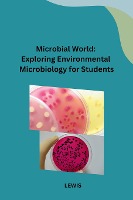In the vast world of microbiology, there is a fascinating field known as environmental microbiology. This branch of science focuses on the study of microorganisms and their interactions with the environment. This subchapter aims to introduce students to the exciting world of environmental microbiology and provide insights into its relevance and significance.Environmental microbiology is concerned with understanding the diversity, distribution, and ecological roles of microorganisms in various environments, such as soil, water, air, and even extreme habitats like hot springs or deep-sea hydrothermal vents. Microorganisms are the most abundant and diverse forms of life on Earth, and they play crucial roles in maintaining the balance of ecosystems.One key aspect of environmental microbiology is studying the role of microorganisms in nutrient cycling. Microbes are the primary drivers of decomposition, breaking down complex organic matter into simpler compounds, and recycling essential elements like carbon, nitrogen, and phosphorus. This process is vital for the sustenance of life on Earth.Moreover, environmental microbiologists investigate the impact of microorganisms on human health and the environment. They study the presence and behavior of pathogens in various environments, helping to identify and prevent disease outbreaks. Understanding how microorganisms interact with pollutants and toxins is also crucial for developing strategies to mitigate environmental contamination.Environmental microbiology employs various techniques and tools to explore and analyze microorganisms. Traditional methods include culturing microorganisms in the lab, while modern techniques like DNA sequencing and metagenomics allow scientists to study the microbial communities directly in their natural habitats. These advancements have revolutionized the field, enabling researchers to discover previously unknown microorganisms and uncover their unique functions.Studying environmental microbiology not only provides insights into the fundamental workings of ecosystems but also offers potential applications in fields such as biotechnology, agriculture, and environmental conservation. Microorganisms have the ability to produce enzymes, biofuels, and bioplastics, and they can be harnessed for wastewater treatment, soil restoration, or biocontrol of pests.

